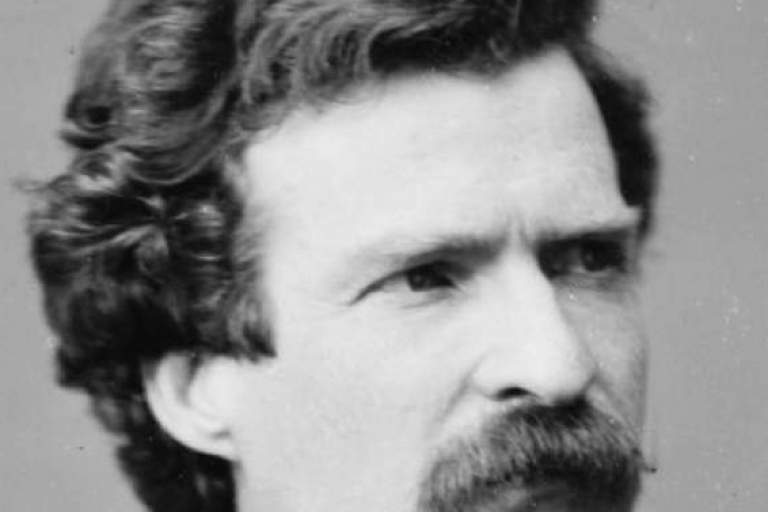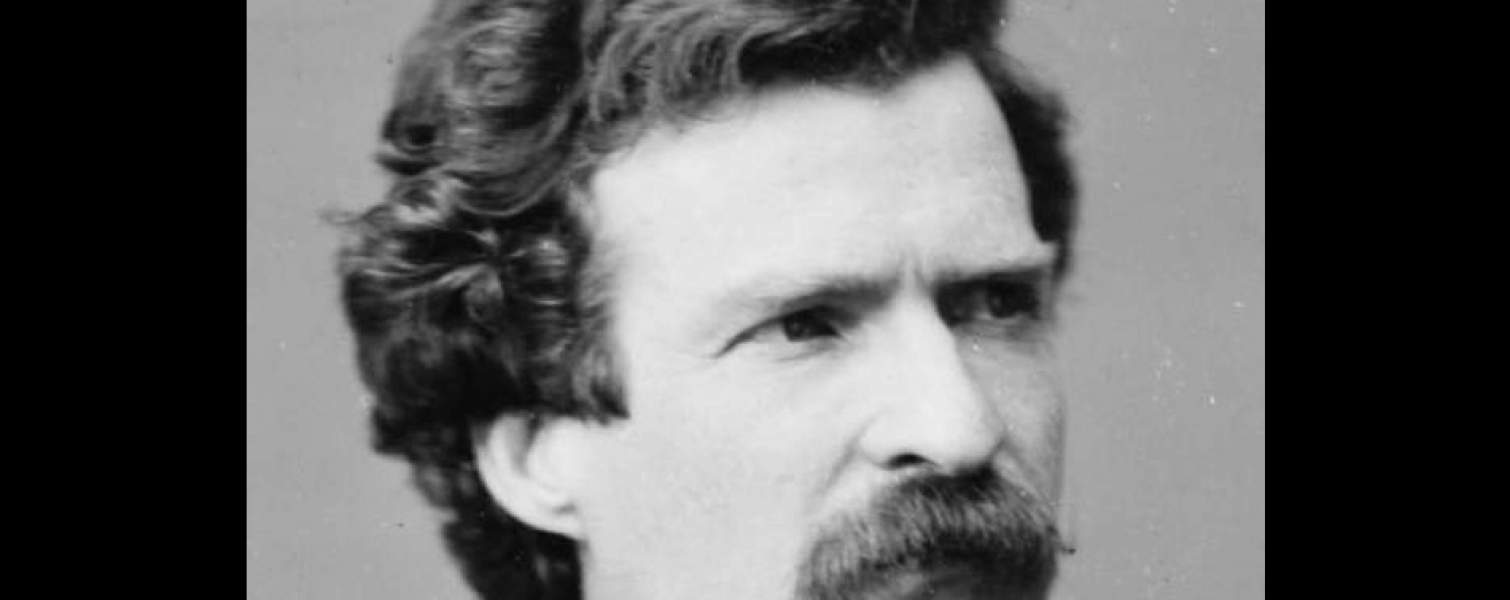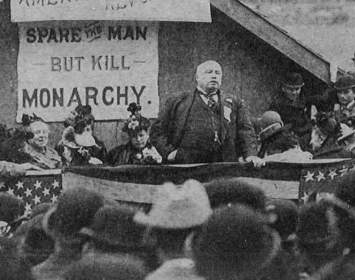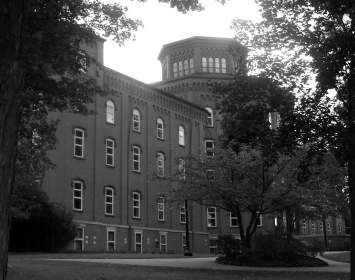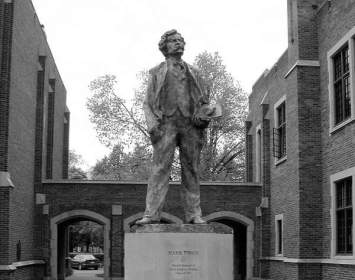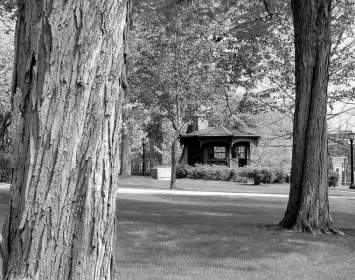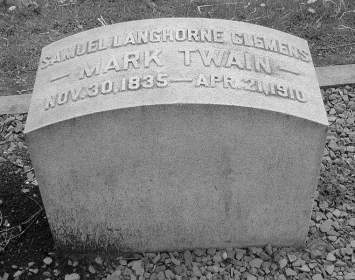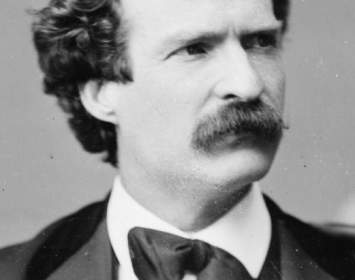Mark Twain's deep ties to Elmira came through love and matrimony. On an 1867 sea voyage during which he gathered experiences that would shape his first best-seller, The Innocents Abroad, Twain befriended Charles Langdon of Elmira. When Langdon showed him a photograph of his elder sister Olivia, Twain fell in love at first sight. Charles and Olivia were children of Jervis Langdon, a prosperous Elmira coal merchant and Underground Railroad conductor who once sheltered a fugitive Frederick Douglass. (Douglass and the elder Langdon became life-long friends.)
Accepting an 1868 invitation to visit Charles Langdon at home in Elmira, Twain met Livy (Olivia) in person and proposed just days later. She declined; there followed a lengthy, mainly postal, courtship in which Twain wrote Livy more than 180 letters. In February 1869, Livy relented and the couple announced their engagement. They married a year later. For many years, Twain spent summers in Elmira. He wrote major portions of The Adventures of Tom Sawyer, Adventures of Huckleberry Finn, Life on the Mississippi, A Connecticut Yankee in King Arthur’s Court, The Prince and the Pauper, A Tramp Abroad, and many short pieces in an octagonal wooden study that was given to Twain by friends in 1874. The study is now preserved on the campus of Elmira College.
Twain died on April 21, 1910, as he had been born, in a year when Halley's Comet made its closest approach to Earth. He is buried in Elmira's Woodlawn Cemetery alongside his mother, wife, son, and daughter.
